1. Neck Strain: Choreography that calls for excessive head movement can easily strain dancers’ neck muscles, especially if dancers do not properly use the full spine when arching the head/neck.
Prevention Tip: Lengthen the neck rather than collapse it.
Treatments Suggested: Massage Therapy, Osteopathy
2. Rotator Cuff Tendonitis and Impingement:
Extensive use of the arms (overhead lifts and falls) can lead to
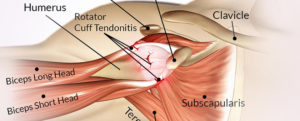 tears in upper-arm tendons or even impingement, painful pressure felt in the shoulder when the rotator cuff and scapula rub together as arms are lifted.
tears in upper-arm tendons or even impingement, painful pressure felt in the shoulder when the rotator cuff and scapula rub together as arms are lifted.
Prevention Tip: Be aware of the actual landmarks of the shoulder girdle. Once dancers understand the scapula positioning, they can have better anatomically aligned mechanics.
Treatments Suggested: Acupuncture, Shiatsu Therapy
3. Lower-Back Strain and Muscle Spasms: Lifting, arching and improper technique can all overwork and strain the lower-back extensor-erector muscles. Dancers with hyperlordosis (a swayed back or lower-back curve) are more prone to spasms.
Prevention Tip: Imagine the pelvis as a bowl with water. Preventing the water from splashing will improve core strength.
Treatments Suggested: Bowen Therapy, Shiatsu therapy, Osteopathy
4. Snapping Hip Syndrome: Iliotibial (IT) band tightness, weakness along the outside of the hip and lordosis can cause this syndrome. Dancers will experience a snapping rubber-band–like sound in the frontal hip joint, as the IT band glides over the greater trochanter (upper-leg bone) during battement or développé.
Prevention Tip: Strengthen the lower abs and all pelvic stabilizers (abductors, adductors, hip flexors), and avoid turning out at the feet, which stresses the knees and hips.
Treatments Suggested: Massage Therapy, Acupuncture
5. Patellofemoral Pain Syndrome: This syndrome stems from tight hamstrings and calf muscles, weak quadriceps and repetitive force from normal movement putting pressure on the patella (kneecap), causing the knee-protecting cartilage to lose its shock-absorbing ability. Dancers with high-arched or flat fleet, wide hips and knees that turn in or out are more likely to experience this pain.
Prevention Tip: The knee is the victim between the ankle and the hip – core strength, hip-abductor strength training and IT stretching are key.
Treatments Suggested: Acupuncture, Bowen Therapy
6. Meniscus Knee Tear: Twisting knees during movement, forcing feet in turnout or losing control when landing a jump can tear the cushioning knee cartilage.
Prevention Tip: Strengthening the core is crucial to knee health. It lessens the burden on the knee, so you are not landing with so much force.
Treatments Suggested: Acupuncture, Shiatsu Therapy
7. Posterior Tibial Tendonitis: Dropping the medial arch during warm-ups or basic barre exercises overworks the tibial tendon. This type of tendonitis also coincides with shin splints or can be the result of chronic ankle rolling.
Prevention Tip: Work to lift the arches and do not force turnout from the feet.
Treatments Suggested: Acupuncture, Cupping Therapy
8. Achilles Tendonitis: An overuse injury caused by training extensively during a short period of time, dancing on a hard floor or putting pressure on a tightened calf muscle. Weight pressure or unbalanced range of motion will predispose dancers to this type of tendonitis.
Prevention Tip: Use Thera-Bands when doing tendus, basic flexibility and resistance work.
Treatments Suggested: Acupuncture, Massage Therapy, Shiatsu therapy
9. Lateral Ankle Sprain: A ligament tear that happens when the outside of the ankle rolls inward after loss of balance from landing a jump.
Prevention Tip: Use a Thera-Band to keep the ankle flexible and strong.
Treatments Suggested: Shiatsu Therapy, Acupuncture
10. Posterior Ankle Impingement Syndrome: A pinching sensation felt during repeated floor or barre work, as the heel bone comes into contact with the talus bone and tissues at the back of the ankle compress. Reaching a full range of motion when pointing the feet or in relevé will be difficult. Dancers born with an extra bone in place are more prone to this syndrome.
Prevention Tip: Vary your training regimen to focus on other types of dance after excessive pointe or demi pointe work.
Treatments Suggested: Acupuncture, Cupping Therapy, Massage Therapy, Shiatsu Therapy, Osteopathy, Bowen Therapy

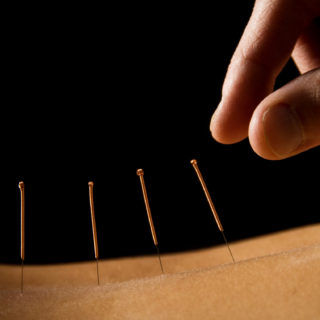

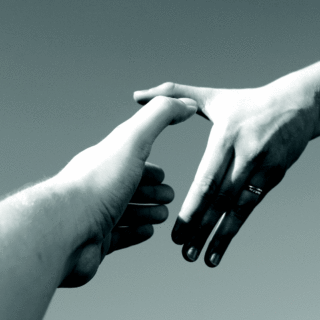






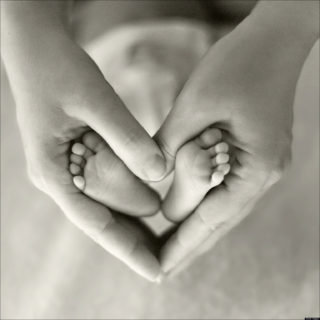





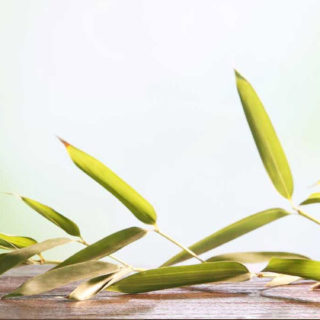

No Comments
Be the first to start a conversation